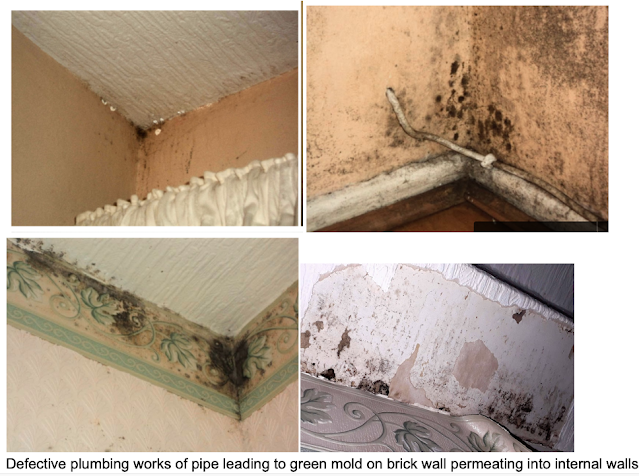Guest post by Philip Grant in a personal capacity
An entry from Brent Council’s latest Forward Plan
Dear Brent Council,
I think that you’ve become too complicated in the way you seek to provide the new Council homes that many local people need.
Take, for example, your decision (at last November’s Cabinet meeting) to buy a block of flats at the former Alperton Bus Garage site. The developer, Telford Homes, was given planning permission to build three tower blocks there, on condition that one of them, block C - containing 155 of the 461 flats proposed in their application, would be as “affordable housing”.
South-west elevation drawing from the planning application documents (block B outlined at the back)
Normally, when a private developer agrees a large-scale affordable housing offer, they do so in partnership with a housing association which will provide those homes. But here, it is Brent Council who have stepped in to acquire them. And the Council is not buying them direct from Telford Homes. It is proposed that they will be acquired from an Asset Special Purpose Vehicle (“ASPV”). Who or what is an ASPV?
That would be explained in the report that Cabinet members made their decision on, wouldn’t it? If it was, the explanation was in one of the (now all too common) exempt appendices. Looking at the minutes of the meeting, all the Lead Member for Resources, Cllr. McLennan, said about the ASPV was simply a repeat of the Officer’s report :
Opening section of the November 2021 Cabinet Report
The report to the meeting was not from the Director of Housing, but the Director of Finance. No questions were asked about why the Council was not buying the flats direct from the developer, who the beneficial owner of the intermediary ASVP was, and why it would not be a straight 999-year lease. Cabinet members seemed more intent on congratulating the Council, its finance team (and themselves?) for the proposal they were about to “rubber stamp”:
‘In expressing their support for the proposal, Cabinet highlighted the opportunity the scheme provided to further increase the supply of affordable social housing within the borough based on a leasing model which was felt to represent good value for money. Officers were thanked for their efforts in securing the necessary terms ….’
But how ‘good value’ was this ‘leasing model’? The Council would be taking an initial 50-year lease on 155 homes in a 26-storey tower block (55 x 1-bed, 49 x 2-bed, 46 x 3-bed [5 person] and 5 x 4-bed [6 person] flats). The report from the Director of Finance said:
‘Officers have been in discussion with the ASPV regarding the possibility of purchasing these homes. An offer has been on a purchase price of circa £48M via private treaty on a 50 year leasing arrangement, which means an average of £280K for each home.’
The report then goes on to say:
‘The target average development cost under the New Council Homes Programme (NCHP) is £280K per home. As such, the leasing model represents good value for money.’
It appears from this that the cost per home for the leasehold flats at the Alperton Bus Garage site would be no better than the development cost for freehold homes on one of Brent Council’s own housing projects, over which the Council would have much better control.
And the £280k per home figure is dependent on the deal to buy leasehold flats from an ASVP (which only has an option to acquire them from the developer) qualifying for a £4.3m grant from the GLA, and that the Council would qualify for 100% Stamp Duty Land Tax relief on its leasehold purchase, which is not certain:
‘These assumptions will need to be fully tested along with the Council’s tax advisors and HMRC. Failure to secure the SDLT exemption noted above would increase the cost of the scheme by circa £1.9M.’
Why is Brent Council getting into such a complex and potentially risky deal? If it has £48m available to spend on new Council homes, why not spend it on building those homes on a vacant site it already owns, and for which it has had full planning consent since February 2021?
Diagrammatic view of Brent’s Cecil Avenue housing scheme. (From an April 2021 Council document)
I am referring to the Cecil Avenue site, part of Brent’s Wembley Housing Zone, which I have been writing about since August 2021. As can be seen from the image above, this development is not a tower block (maximum height 9-storeys), it will have an internal garden square and includes family-sized maisonettes with their own private gardens. Surely that would provide better new Council homes for Brent people in housing need?
At the moment, following a Cabinet decision six months ago, it is proposed that 152 of the 250 homes to be built at Cecil Avenue (including 20 family-sized homes) would be for a developer partner to sell at a profit. In an article last month, I asked why Senior Council Officers and a small number of Cabinet members (with the rest not questioning it) were appearing to favour developers over Brent residents in need of a decent Council home? We are all still waiting for an answer!
I’ve set out the question and the evidence behind it. Now here is my advice. Avoid the ASPV! Ditch the developer! Get on and use the money you were willing to spend on 155 homes in a leasehold tower block in Alperton, and instead build all 250 of the homes at Cecil Avenue (including the 152 you planned to “give away” to a developer) as affordable rented Council homes. You know that is good, plain common sense.
Yours sincerely,
Philip Grant.
P.S. My consultancy fee for this sound advice is the same as usual - £zero!
















